- Blog
- Lux Powwow
- India
Lux Powwow Session With Saket Sethi, Founder of Archilogics
- 22nd Sep 2020
- 2379
- 0
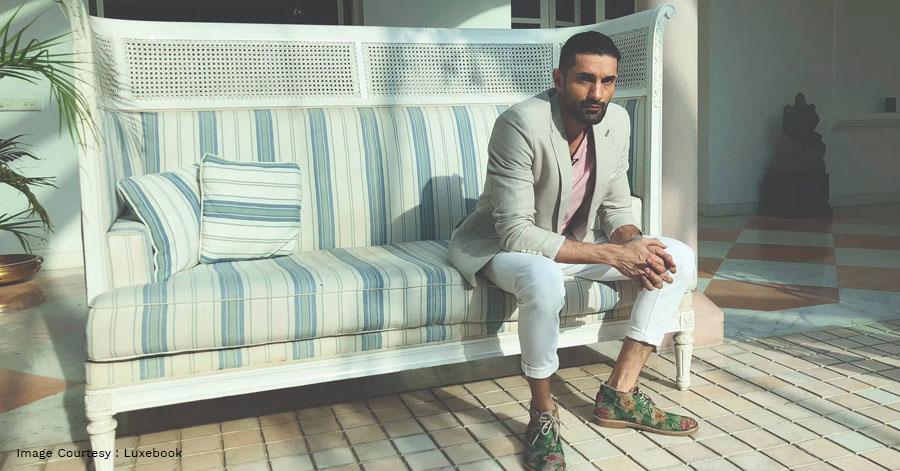
As the founder of Archilogics, a collective of Designers in Mumbai & Naples who aim at redefining contextual future living from a historical perspective, Saket is currently working on a line of furniture designed in Italy and a series of eco-responsive projects under SUNOO - Sustainable Unified Nature Optimized Objects.
The LuxuryAbode group invited Saket Sethi at the 11th session of LuxPowwow. Simran Suryavanshi, the head of design at LuxuryAbodeWorld, spoke with Saket. Let's know what inspired Saket for his exemplary journey and much more.
Simran Suryavanshi: Saket Sethi
Hey, How are you?
All well. Very good, Thankyou.
I welcome you to LuxPowwow. Without further delay, I would like you to introduce to the audience who has been eagerly waiting for this session. I am from the same field. Saket Sethi is a Luxury Architect, A show host, and an interior designer. Saket, Welcome to LuxPowwow.
Thank you for having me.
Could you start by telling us about you and your journey?
Well, I always wanted to be an architect as far back as I can remember. As soon as I finished my studies I was very keen to join the design industry. When I came back from the US I started working. In the process of working I kind of read about the experience. When I came back to India after finishing my studies, I was eager to join the workforce and start designing. So I started to get my practical experience but my spark to be an architect was a little non-linear. I started to model. I was doing modeling on the weekends and would work from Monday to Friday. I had this deal with my boss that I would not come in on weekends. So I kind of mix things. I traveled a lot in those times. I mean I was doing some strange things like I was signed up as the ambassador for the John Players. I would fly to South Africa on a Thursday night and come back to work on Monday and this continued for about 4 years when I was working in modeling at the same time. I was trying to paint, read, and write. Then, eventually, I decided to start Archilogics. That's where I think I have been for the last 17 years now.
You are a TV show host also. Would you like to tell us about you as a TV show host?
TV is really interesting because I think when you are a designer or an architect, or anybody in a creative field you want to talk about what is for you. At the same time, you want to disseminate, or you want to create a dialogue board. You want to create an environment where people want to talk about design. Now there is feedback, there is some participation. I think when a good time started, the very first show was five years ago or more than 5 years. It was the whole new world and I opened the first episode. It went well and they called me back and said would you like to do another episode because we were doing a one-one episode with each architect. Then I came back and we were actually on the show which worked for Salman. And, Salman came on the show. It was a good episode. Thus, they asked me to come on board and host Luxe Interiors. I did it for two years; Season 2 and 3 with them. A year later, I was offered the second season of the design age cube. It has been one thing leading to another. But I have always been interested in talking about design. I want to share some of the experiences that I had and that's it.
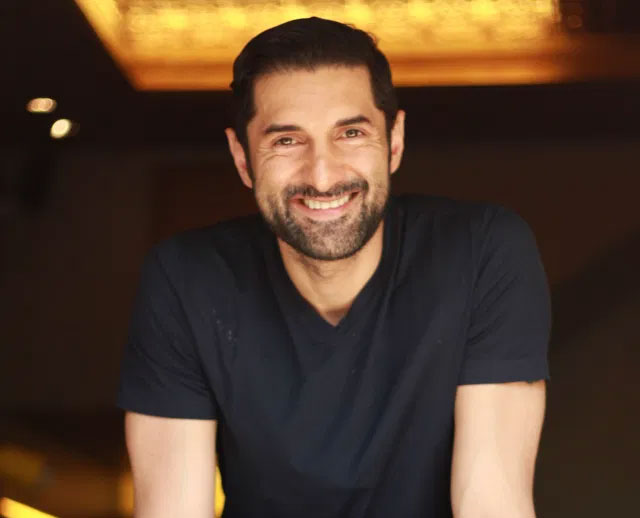
I have a question. What is a good design according to you when you are in space? When do you feel it's complete in terms of design?
I think everybody has a very different interpretation of what good design is. When you talk about whatever design you are looking at, you look at the subcategory of designs. Let's say the sub-categories are caste, functionality, pleasure, and finish. You have as many criteria as you want for that. I think the good design satisfies all those criteria very seamlessly. When it does that you don't notice that it's done one way or the other. It's just seen to make sense. It seems to exist like it always existed. I think good design is a little bit timeless. All these various criteria that have judged the design finally disappear. And the design is either pleasurable to see or to experience. Or even may not be pleasurable but may provide you an evolutionary experience. So good design will do all of those things.
When you design, do you give equal priority to all these subcategories? What's your design pursuit? Like, what do you give the most priority to? The category when you sit and design.
I think it changes, at least a starting point changes. I think it goes by brief because you don't necessarily design for yourselves but a client. So you have some kind of brief or requirement that is handed to you. I think out of those you zone yourselves in one particular criterion which is going to lead the design and create what we call a good design. But eventually, when you finish the process, you want that various criteria are met. It's beautiful and has a timeless appearance. It's cost-effective, functional, and durable. As you know they said that there is a lack of qualities or a true game quality of a great design. But I think you can eventually follow and approve all of them.
As we see you have a very different clientele range. You also design for every man, celebrity, and industrialist. How have you designed for these three verticals? What challenges did you face for each vertical? How your experience is different for all three types of verticals you have designed for?
When I started my career, I was very clear that I wanted to be an architect of experience because in such a wide world that you design in, and to know these things and to have first-hand knowledge of what to do for a particular kind of project. So I was very clear, didn't want to be slaughtered; like I am doing offices, I am doing residences, and I am an expert at residences. And I know sometimes the argument is that he is a jack of all trades. But for me, the lure of learning different project styles is my career. I am going to have a design adventure. I go after whatever is kind of closed in my due frame. Let it lead me where it needs me to lead me. The first big commission I had was campus sided; from Science and Technology campus. It was 22 acres about 100000 sq feet of interiors and never even built a building before. In the selection process, he asked me one question like you never built anything. Why would I give you this project? I said, well, I am going to build it like any other architect as the first project with your support. And, of course, the design was ready and we had enough time to prepare the designers and make them clear what I wanted to do. All the big digs that I didn't know came out of research and so you know what the wet lab is? What a dry lab is? What is the physical sciences lab? I think all those come out of the research. A lot of research goes into something when you arrive at the design. Let's say celebrity client Salman or Salman's office which I did or Ravina's house again, It has a different brief. House is more personal and the office has its brief where you could do accounting work. That leads to how they can help people who need help. So you would have somebody come and say I have got a heart problem and I need help from the Being Human foundation. The environment had to be supportive. There was no budget and we needed to be overwhelmed. The space needed to be comfortable at the same time. There should be brands so I think every client comes with their own story and context. I just don't have a particular formula for handling that. I just try to intuitively look at what's being offered to me as a problem. Then, come up with an equally responsive answer. That's how it is for those clients. I keep hoping to get different projects with different clients. I can expand my repo to a range. Sometimes you take something that you learned in a very large project into designer furniture. And my career has not been very linear. Like, I have not been doing only big projects. I have done bigger projects at the beginning of my career and now I am doing houses. I love the houses. I think you have to surrender to that pathway where you want to be.
I think every project gets you a different challenge for you and it's always fun when it is a different project every time.
That's right.
As this saying “a home is a reflection of us.” Do you think that space has also an impact on our well-being?
Yes, of course, I think if you look at the simple numbers, you spent at least the average person spent over 90% to 95% of the time in something built or a home, or a car. It's been something that is designed for you to stay within or next to. You don't go to nature or live without support or anything built. I think you have to respect the fact that anything built is going to have an impact on you. Then those impacts are sometimes very direct. Sometimes those impacts are subconscious. What is exciting and interesting to me is to understand the cycle feedback of space. You know how a color influences you or a scale over the room makes you feel. Different masters did all these different studies. Frank Lloyd Wright had a technique called compression and release. Where the passage will be very tiny and small and then suddenly you come into a room and it seems so much bigger. Or, you had a patient who is depressed, you use yellow and orange in their rooms. If you want it to be somebody healthier, you use a non-VOC paint. There are again different criteria for all of them. I think eventually it's about well being. If you want to be well in a space.
Even offices are now incorporating that. If a person is spending the major time in an office, that has to be a very beautiful space. Making it more semi-formal not only the desks and all. How do you think culture plays a role in designing? There are different clients from different cultures. Do you think culture is also a part of design briefs?
Yes, of course, I think that you carry culture in your story, right. And, sometimes culture is very manifest. Like if you say I like Indian culture to play an active role in my design and sometimes it is bringing a sense of something Indian. If you are Italian or Spanish, you do carry some sense of how over the years you see spaces populated and what you value as design. You think of an heirloom sofa which is handed over maybe two or three generations to be very simple and very classic. But for our culture, you need something more on it and more showy. So I think that culture comes in me very or the other or it may not be so direct. But it is always pleasant. It eventually goes to the story and the problem you are trying to solve.
I think when we are a big grown-up or being raised in a different kind of culture, it becomes a part of our belief system that how we perceive other things. It does come in every aspect.
Yes, Of course.
Sustainability is incorporated in every field now, the fashion world, even the packaging, and everything. So how has the design field welcome sustainability? We can say what's the need for sustainability in design?
I think it's a very abused word nowadays. Everybody is sustainable, sustainable, sustainable, sustainable. At the end of the day, I want to ask what does that mean? What is sustainable that you are actively incorporating and using. I think with us or with a lot of people, there is a tendency to speak more than what we do. Sometimes when I hear we are into sustainable fashion or we are into sustainable products, I become curious about what could be on the other side of that in the sense of reaction. I was very sure that they would fly. I have been talking about sustainable design or homes for a very long time throughout my work or project that I have done recently. There didn't seem to be the market for it. Because everybody was into the things that were incredibly built than had human or manual force behind them rather than any kind of response to the environment. I don't know if sustainability as an idea in implementation has yet arrived. But I am glad that people are talking about it because we all realize in the time that we are living in. Nowadays we have abused nature and it's catching up. Whether you look at global warming or you look at what's happening with the COVID-19, there may be a fear that we need to be more responsive to the environment. I think sustainability is really important. It should not be used as easily as it is used. Because at the end I don't see any action-oriented sustainability practices even in the design world. When somebody says that it's a sustainable project what do you mean by that? I think I would replace that by other words that say projects are more responsible or responsive to nature or house like baby steps you know. Oh, we are sustainable, not really, you are not sustainable because what is it? Do you have solar in your house? Do you recycle your water? Do you grow your food? Or Does your house self sustain? I think this is the first thing I would say in sustainability education. You can't just keep revolving around the word when you have no idea how it works. I think now we just need to go in a relaxed way by introducing small sustainable processes that everybody can do. Then from a client point of view, you are just being asked for a design that does a little bit more. It may not be 100% sustainable. It may not lead to a platinum project but you can go towards bronze. I can implement it in any one process. It's one step at a time. So I have been thinking about this for about four to five years. Instead of just thinking, talking, and saying about this I am interested in going and building it. I had a client who allowed me to build this vision and this is what I am doing now.
How have you been taking these baby steps towards sustainability? Are there any projects that highlight certain things? When you have to be careful while you design? Nature, environment, or the material you use, it's mindfully designing a little. How have you incorporated that?
I think in the earlier parts of my career, I was not so concerned about it, to be honest. After I did a lot of different projects, I started thinking about what I was interested in, what I would want to build. Because you realize when you do a project. You spend 6 months, a year, 2 years, or years in the project. You are like did that count? Maybe 5 years ago, I started getting interested in greenhouses, green roofs, the ideas of solar, and 3d printing; and I did 3d printing projects for Godrej. The idea was to explore materials; recyclable materials and waste materials. Then, I came up with this project which is arguably India's first and largest residential greenhouse project. We wanted to build the green roof where you had a small plot and you ripped off greenery in this plot to build your home. There was a way to restore this natural ecosystem. Whatever you took off the ground went on to your roof. The idea is eventually you would be able to grow your food on your roof. You would have solar and that solar would help take away your dependence on the grid for electricity. That's what SUNOO became. If you look at the brief it's Sustainable Unified Nature Oriented Object. It could be a chair or it could be a building or a house. These days I am obsessed with houses so this is the first house we have done. The two models that we are designing integrate all these criteria that reflect the sustainable design.
As you described your project, so what is SUNOO? Can you tell us a little bit more about it?
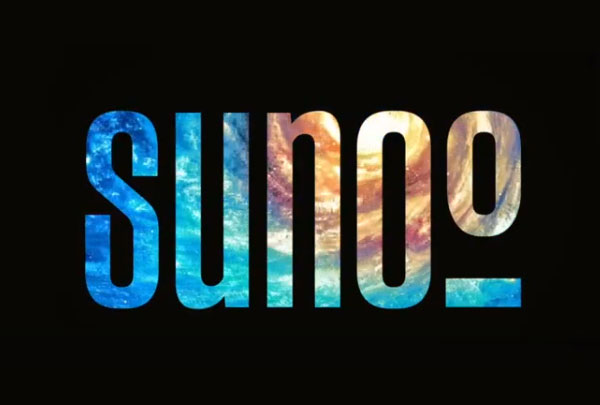
SUNOO is a name that my client came up with because it was a conjunction of two of her children. Then, I started thinking that SUNOO does not actually design and is not even the name of a project. It is a movement because we are talking about Sustainable Unified Nature Oriented Objects. There is SUNOO which I built. There is SUNOO 1.5 which is under design which is an extension. SUNOO 2 project is another project. There are archetypes of SUNOO which are A, B, C, D, and so on. All of these projects have some green components which either lead to green for beauty, or allows birds, bees, and butterflies to occupy that space, or allows you to grow your food, or has some relationship with the Sun.
Solar Panels and some kind mixed in with green and then engaging with new techniques of building construction like saying 3d printing is a new aesthetic. That's SUNOO. We finished SUNOO 1 and it's been quite exciting because before the lockdown I got to speak in Italy about SUNOO. Tesla invited me to speak about the project internationally. I think we are just waking up now because it's the time of COVID-19. Now, we are suddenly saying Hey what's sustainable design? What do we have to do in this area? It's been abused a lot rather than talking about what it should do. It just needed to be built so this is what I built.
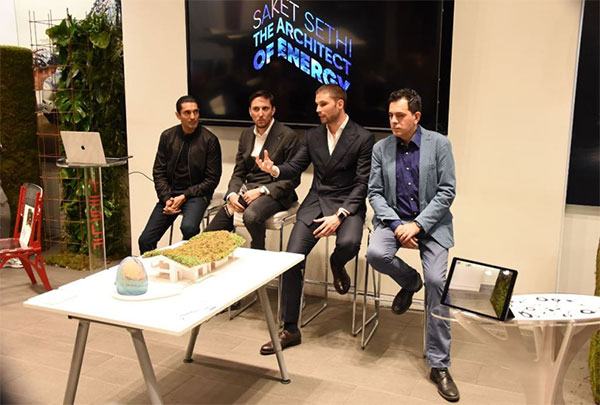
Actually, after this COVID situation, people have been spending so much time indoors. They are questioning their surroundings. Are my surroundings good enough for me to live in it for a longer part of the time? Start questioning our houses also, I don't have this kind of space. This space is not making me feel like sitting here all day.
I see a lot of people who have a secondary requirement of a house, invest somewhere farther away from the city, and build relatively cheaply. You know it's a highly networked house. E.g. great internet and utilities, I think, you can run an office. If you have seen, a lot of people are working from home. There is an interesting shift in paradigm about how people are working. If people could afford they would try to have a slightly bigger home and have a home office rather than going to the office. I think if you would have a little more money, you would want to invest in a house away from the city. Where you can engage in some sort of agrarian activity, you can have high-speed internet, and high-speed connection to T.V., and all other comforts you need and you will be connected to nature at the same time. That's very exciting for me particularly.
That's very nice. As you explained, In your projects SUNOO, you said you incorporated a green roof and you could grow on your green roof. I am pretty sure it might be a big challenge because of the direct exposure of sunlight and all nature. So was there a big issue because of the roof?
When we started designing the project was really about a flat roof. So I thought you could get up to your flat roof and sit there. It would be a normal experience to build that. I was having a little concern that if we had heavy rainfall or we had problems with the weather or even in the construction, it would just be a structural problem structurally. So I decided to create a sloping roof. And we said that it was a first of its kind whatever makeover we received. We will be able to have a kind of slope on the roof. And then when building it I started to get anxious because I thought if you build the screen, one cyclone or one monsoon could rip the entire roof off. And there it strengthens the structure because of the tuning of the room. The subsystem created a very tough environment and now it has lasted three monsoons. And the first monsoon was the hardest. I think the biggest challenge that we had was that we would have to test what we do because you are on a slope and these are going above the ground. But we were very excited to have seen the scores of self-pollinating activities of butterflies and bees. It's a very untouched area right. There is no human contact around it. It's not a ground level. It is not affected, it is protected. It's giving us amazing results. My clients are very happy and I am happy too. We hope to build more of these. I think the generation is going to be flat. Growing your food, engaging it with solar. You will see that you are ready to see the pictures up.
I think it's a great project and I think it should be spread around more.
Like we are doing now.
Yeah, spreading it. How do you manage to spread this word design like spreading the sustainability design through your concepts? How do you let people know about sustainability or green design or eco responsive?
To be very honest I am not a big marketing guy. I mean you can't see me going to events. I don't participate in a lot of things. I am happy with designing stuff. To focus you do have to put something away. Before COVID-19, I was traveling tremendously. I was traveling to Italy non-stop and before that to Spain. I think in the academic circle where I have been invited to speak. I spoke in Politecnico di Milano about SUNOO. I spoke about it at the University of Naples and recently I have spoken about SUNOO in the oldest university in the world. It's in Naples. On the academic side, you want to talk to academicians who are interested in this kind of stuff. I think on the other PR side of it whether it's the live show or it's an Instagram post or feedback, this is as far as it goes because I think in these things you already have a very limited audience. I think if you want to expand the audience you have to be very patient to keep building and designing. When you have something that you build, that's the best time to talk about it. That's what I have been doing really.
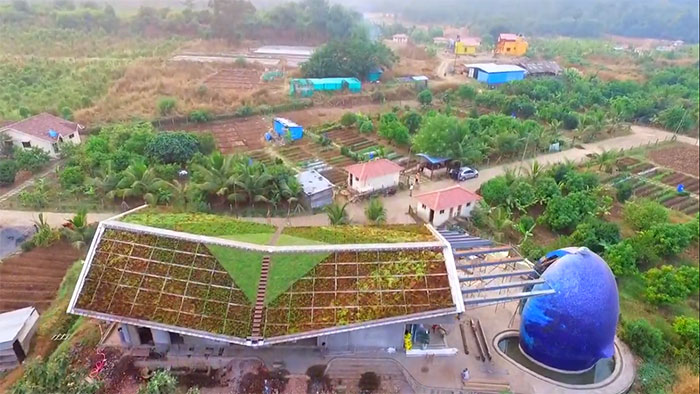
I think SUNOO is the big inspiration for all the buzzing designers out there. I am myself an interior designer and it's a big inspiration to me also. There are a lot of questions from the audience and we would like you to answer them.
Sure
The first question is from Anjali Gangnani. How will a design process change after COVID-19? What changes would be there in the design process?
Well, that is a good question. I think in some ways, Anjali, everything is changed. Right. I mean we are not even designing offices anymore so designing homes. We are designing in a collaborative environment so passing information virtually. We are going to have SUNOO related models that carry everything. You can use your iPad or you can have a dark scanner that can scan a room. I think you're going to start waking up in a more natural environment. You are going to participate virtually. The impact of the industry is also going to be tremendous because projects are going to be limited. They are going to be much more serious and people have to be monitored more closely to be efficient. So, in the interior designing field, there is going to be a lot more changes. I don't know if you have watched the first episode of design age cube, we did a makeover which was a living workspace. I think the time has arrived when you are going to work from home. I think end-to-end there would be a paradigm shift. You gotta give it at least another year to see how it shakes out.
Saket there been a request for a virtual house tour of yours?
Sure, I can do that. This room would be easier. So all my house is a studio. It is like a living space. The heart at the studio is my library and if you can see, I am overly organized. I have magazines by categories and shelves are by size. I have collected magazines from all over the world. Interior design and I have a lot of my inspirational readings, fiction, and non-fiction at an upper level. My library is essential for my actual fixed and organized here. I have some of my favorite pieces. This is one of my favorite posters. This is another art piece that I bought which is one of my favorites. So I have these collective pieces. A lot of my work stuff and my living stuff. They are mixed in together. This is where I am speaking to you. I have got some antique pieces. Like this is an antique silver table and sort of the heart of my work center and some press articles. Here is something when I was a model. A lot of the books that I am reading at the same time. Usually, I just tend to pick out the one-one book and read a few pages and put it back. All my work is happening on this thing that is my iPad. You can't see outside but I have a small garden space. And, then more artwork, essentially it's a white room now. I have this ceiling with me that I carried from New York. This is one of my chairs. This is the line of prefabrication, I bought these pieces together. You could see it's movable. Yeah, can slide it in, you can detail it as you wish. Then, I got some classic antique pieces which are one kind of base of my tables. Some wallpapers are from the UK. This is the piece from Kashmir. I can show you the space that I like. Let's see, this is one of my reception spaces and my favorite space. This is because I have some of my favorite things here. I have this kind of grid wall. This is very simple and easy to execute. This the Lama which I got in Milan. This is another selective Vase that I got in Milan. I did this makeover on GQ with paper flowers. That's a model of the Duomo and those housing models are from one of my projects. You can see these small houses with a split terrace and a roof. This is another house model. This is a set of trays that I love. These are from Zaha Hadid. I just put these trays up on the wall because they look beautiful there. It's a shame to leave them in a cupboard. Then, one of my pieces of an industrial design is an Apple mouse, an early generation Apple mouse. David Head from New York and the piece from Bali. Then I have this old table that I have covered with very nice wallpaper. I keep combining these things. Here is the foot that I got in Sri Lanka, looks like mine. This space is very neutral. It's all badge marble and white marble and is very simple. These are my chairs. I have got these Acrylic chairs because I don't like anything visually blocking space. Yeah, that's my space.
I understand how your house space is very neutral but it has space for every culture. I could feel it. It's a beautiful house.
Thank you, I mean, I think when you travel you have this tendency to keep picking things up, right. You want to pick up something from everywhere you have been. This tells the story of who you are when you look back. I remember that time when I was in Spain, Italy, or in London, or India. It's wonderful. So yeah, it's an autobiographical kind of space linked to time and experiences.
Now, I have one more question from Tanishka. When you initially started? Was there any specific architect that you admire?
I have always been very inspired by Zaha Hadid. Zaha is a huge inspiration for my whole life. I think I have spoken about her more because of the struggle when you are trying to do something different, it's not easy for a client or an audience, academicians, families, or support systems. Like wow, these new ideas are great. Why don't you go for it? I think the fact was, She was a woman in the male-dominated industry. Not necessarily the savviest and most network friendly, deciding to go on it on her own. Coming as a minority from Iraq, and going to London. Saying I am good to set up. She was offered a partnership that was one of the powerful architects. She said, no I don't want to do it. Then, starting your practices for 20 years doing paper projects. Then having your third project explode to the point when your network, your career, and your kind of projects. You are building billion-dollar projects all over the world. I think it's an inspirational story for every architect, for me, for you, and for a person who asked this question. For me Zaha is not only for designing, there are other stories as well.
Lastly winding up this session that I don't want to end. What do you think of this initiative of LuxPowwow by Luxury Abode?
I think it's great, I can see that you can bring younger and newer audiences. You are trying to do what is required at this time, right. I think It's really important to share ideas, this is a good initiative that you guys have taken. Thank you for having me.
Thank You so much for being a guest. It was a lovely session.
 Deepshika Lunia
Deepshika Lunia

Comments
No comments yet.
Add Your Comment
Thank you, for commenting !!
Your comment is under moderation...
Keep reading luxury post